Joint life insurance policy for couple...how beneficial?

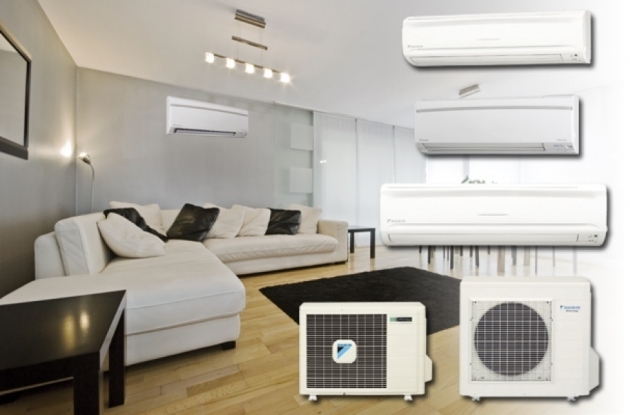
Even as temperatures are rising by the day, the use of air conditioners (ACs) is increasing. These days, there are affordable ACs, even for middle class families. However, many are not aware about the functioning of ACs. Even though they would like to buy an AC, they hesitate, because they are not aware of its functioning, maintenance and how much power it consumes.
There are many FAQs to be considered before buying an air conditioner. Like: How does an AC function? What capacity AC is needed for a room of a given size? What care should be taken if an AC has to work efficiently, giving the right amount of cooling? What is the difference between Inverter AC and ordinary AC? Where to buy ACs? What are the guidelines and safety measures to be followed before buying one?
How do ACs work?
Normally an AC is understood to be a mechanism that gives cool breeze. But in reality, it is not so. It simply sucks in the hot air from inside and throws it out, leaving the premises cool. It works with the help of a compressor, condenser and evaporator and a chemical called refrigerant. In a window AC, all the three parts are fixed outdoors. In a split AC, the compressor and condenser are outdoors, while the evaporator is placed indoors. The refrigerant keeps circulating between the three parts. Besides these, there is a thermostat that shows the temperature levels and a fan in the evaporator to help blow the breeze.
First the compressor applies low pressure to change the refrigerant from gas to liquid. A lot of gas is changed to a small quantity of liquid. So the heat in the gas is compressed in liquid form. The hot liquid is then pumped into the condenser. Condenser releases the heat from the liquid refrigerant, into the atmosphere outside. The refrigerant that is thus cooled, is sent back into the evaporator.
The function of the evaporator is to slowly release the pressure on the liquid refrigerant. As the pressure is released, the refrigerant evaporates in the form of a cool gas and is released out of the evaporator. As it occupies more space, the gas cools further. Gradually it gathers the heat in the room and is sucked back by the evaporator, for the cycle to repeat. This goes on until the air in the specified space (room) is cooled to required limits. Window, Split, Central ACsThere are three kinds of ACs: Window, Split and Central. Though the functioning of all the three is the same, their use depends on the need and expenditure that is to be borne by the owner. A window AC is like a box that is fitted outside the window. In a split AC, the evaporator is placed indoors, while the compressor and condenser are fixed outside. A tube connects all the three. Central AC implies that all parts are outside the building or structure and only cool breeze is released inside. It is arranged mostly for the whole house, building or office. It is arranged in such a way that cool breeze is released in all parts of the house or building inside.
Window, Split, Central ACsThere are three kinds of ACs: Window, Split and Central. Though the functioning of all the three is the same, their use depends on the need and expenditure that is to be borne by the owner. A window AC is like a box that is fitted outside the window. In a split AC, the evaporator is placed indoors, while the compressor and condenser are fixed outside. A tube connects all the three. Central AC implies that all parts are outside the building or structure and only cool breeze is released inside. It is arranged mostly for the whole house, building or office. It is arranged in such a way that cool breeze is released in all parts of the house or building inside.
What is refrigerant?
Refrigerant is a chemical that is gaseous in normal temperature and turns in to liquid with low pressure. When it is compressed, it retains the heat in a the liquid form. So the refrigerant in liquid form is hot. When pressure is released, the liquid again transforms to gas and cools as it expands.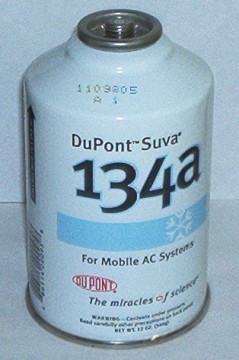 An everyday example of this is our own breath. When we breathe in air, it goes in to the lungs and when we breathe out through the mouth, it is hot because it has gathered the body temperature. But when we breathe out through our lips, the same breath is cool. An evaporator and refrigerant work in the same fashion.
An everyday example of this is our own breath. When we breathe in air, it goes in to the lungs and when we breathe out through the mouth, it is hot because it has gathered the body temperature. But when we breathe out through our lips, the same breath is cool. An evaporator and refrigerant work in the same fashion.
While buying an AC, you should make sure the kind of refrigerant that is being used. Various kinds of refrigerants are: R-22, R410A, R32, R134A, R290, R600A. Among these, R-22, R32 and R410A are not highly combustible. While R134A is slightly combustible, R290 and R600A are somewhat more combustible than that. However, as the efficiency of the refrigerant lies in not polluting the atmosphere, R290 and R600A are frequently used. Companies too are manufacturing equipment that use safe refrigerants.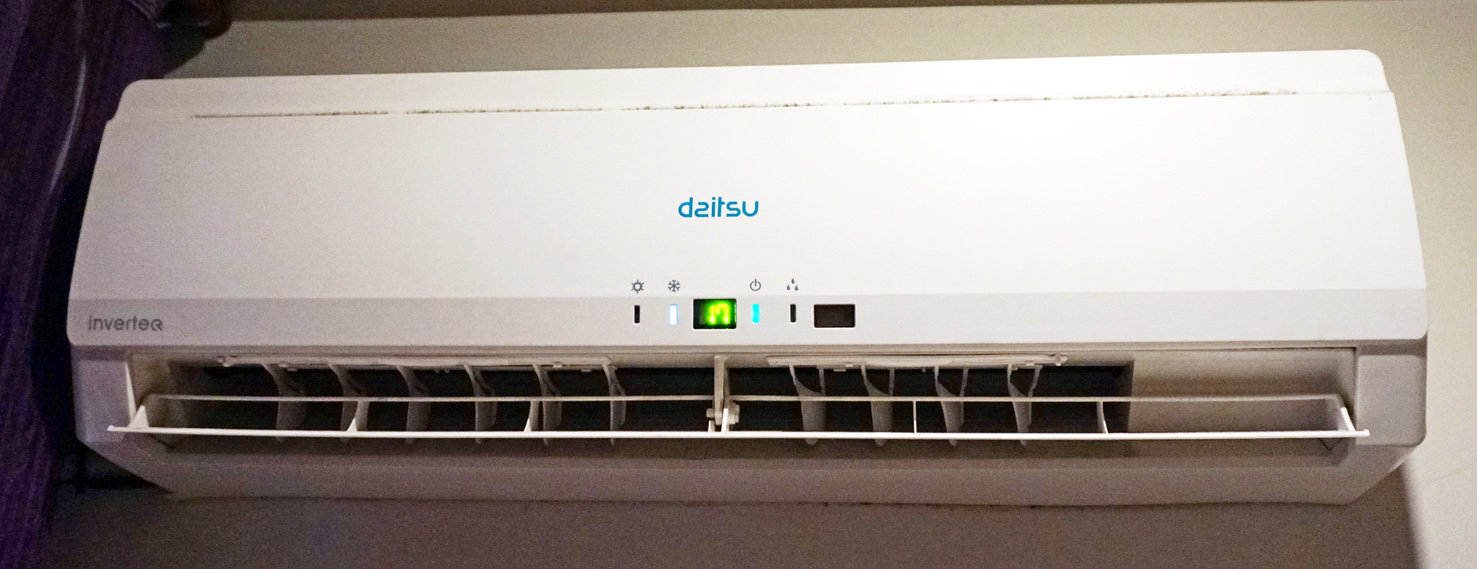 What does the fan do?The fan in the evaporator of an AC helps the refrigerant to absorb the heat in the room. The fan rotates and allows the air in the room to pass through the evaporator coils. As the refrigerant absorbs the heat in the air, it becomes cool and we experience a cool breeze blowing. The fan in the outdoor unit of the AC works in a similar fashion. As it sends cool air over the hot liquid refrigerant in the condenser, it cools.
What does the fan do?The fan in the evaporator of an AC helps the refrigerant to absorb the heat in the room. The fan rotates and allows the air in the room to pass through the evaporator coils. As the refrigerant absorbs the heat in the air, it becomes cool and we experience a cool breeze blowing. The fan in the outdoor unit of the AC works in a similar fashion. As it sends cool air over the hot liquid refrigerant in the condenser, it cools.
Thermostat records temperature
The thermostat records the temperature in the room so that you can adjust it accordingly. As soon as the room is cooled to the desired level, the thermostat stops the compressor. The refrigerant stops circulating. Once the room gets heated up, the compressor is switched on and the cooling process begins. But all through the fan in the evaporator keeps rotating.
Cooling standards can be tested Many might not know which capacity AC should be bought for how much area. The cooling capacity of ACs is commonly referred to as one tonne, 1.2 tonne, 1.5 tonne, 2 tonne etc. One tonne AC has the cooling capacity of 12,000 British Thermal Units (BTU) or 3,517 cooling watts. The heavier the capacity, the more cooling the AC offers.
Many might not know which capacity AC should be bought for how much area. The cooling capacity of ACs is commonly referred to as one tonne, 1.2 tonne, 1.5 tonne, 2 tonne etc. One tonne AC has the cooling capacity of 12,000 British Thermal Units (BTU) or 3,517 cooling watts. The heavier the capacity, the more cooling the AC offers.
The idea behind weighing AC capacity in tonnes is explained. The heat required to melt one tonne of snow is measured and ACs are categorised according to the amount of heat they can absorb. An AC that can absorb as much heat from a room, that is required to melt one tonne of snow, is described as one tonne capacity. Normally heat is measured in BTUs. To melt one tonne of snow in one hour, 12,000 BTUs heat is required. This means, one tonne capacity AC can remove 12,000 BTUs of heat from a room.
On an average, for a 10x10 room, an AC of 0.8 tonne capacity is sufficient. For the same room, if it gets direct sunlight or if it is in the first floor and has a roof open to sunlight, it needs a one tonne to 1.2 tonnes capacity AC. For rooms that are 10x12 or 12x15 sq. ft., ACs with 1.2 to 1.5 capacity should be fixed.
How much power is needed?
Normally, ACs consume more power. An AC of one tonne capacity, consumes one unit of power in one hour. An AC with 0.8 capacity will consume one unit of power for one and half hours. Higher capacity ACs use higher power accordingly within the same time. However, the consumption of power is not the same throughout the year and varies according to the season. In winter it is less and in summer it is more.
Even Inverter ACs use power in the same manner, depending on their capacity. However, here the consumption of power depends on the speed of the compressor that keeps changing according to outside temperature. Inverter ACs save up to 30 per cent to 60 per cent power, based on the use of the AC.
Normally, if a one tonne capacity AC is used for six to seven hours daily, it consumes 1,500 units of power, annually. The same usage of inverter AC will consume 1,000 to 1,200 units, annually.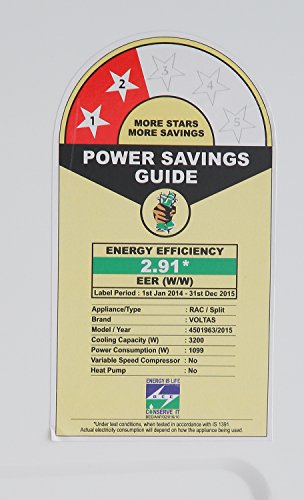 ISEER, EER, BEE ratingsNormally, all electronic equipment is rated as Bharat Energy Efficiency (BEE) or Energy Efficiency Ratio (EER). The ratings are made as per the consumption of power of the various ACs. However, it is difficult to rate ACs, as their work and efficiency is affected by the environment in which they are used. An AC will have to work more, when it is 40 degrees C outside. Similarly, the burden on the AC is less during winter, when the temperature is 25 degrees C. Also, the use of AC differs from region to region. So Seasonal Energy Efficiency Ratio (SEER) is being implemented. The Indian standard is called ISEER (Indian Seasonal Energy Efficiency Ratio).
ISEER, EER, BEE ratingsNormally, all electronic equipment is rated as Bharat Energy Efficiency (BEE) or Energy Efficiency Ratio (EER). The ratings are made as per the consumption of power of the various ACs. However, it is difficult to rate ACs, as their work and efficiency is affected by the environment in which they are used. An AC will have to work more, when it is 40 degrees C outside. Similarly, the burden on the AC is less during winter, when the temperature is 25 degrees C. Also, the use of AC differs from region to region. So Seasonal Energy Efficiency Ratio (SEER) is being implemented. The Indian standard is called ISEER (Indian Seasonal Energy Efficiency Ratio).
ISEER rating can be compared to star rating. If ISEER is 3.10 to 3.29, then it is rated as 1 star. If it is 3.30 to 3.49, it is rated as 2 star. From 3.50 to 3.99 it is three star and from 4.00 to 4.49 it is four star. It is five star if the energy efficiency is 4.5 and above. Currently, ACs are rated as per ISEER as well as stars. Companies need not mention the ratings on inverter ACs, till the end of 2017. So many companies are not mentioning the ratings. Ratings have been made compulsory from 2018.
Various compressor models It is important to know, what kind of compressor your AC has. There are two main kinds of compressors: Reciprocative (Piston type) and Rotary type. Reciprocative compressors are easy to maintain. AC works in full capacity, efficiently. But they emit some sound and also they vibrate a bit. They even give out a lot of heat. But their price is less. Rotary compressors are very useful in offices and for cooling needs of industries. Sound is very less in these. They do not give out much heat. But their price is high. They have to be used frequently or they become defunct.
It is important to know, what kind of compressor your AC has. There are two main kinds of compressors: Reciprocative (Piston type) and Rotary type. Reciprocative compressors are easy to maintain. AC works in full capacity, efficiently. But they emit some sound and also they vibrate a bit. They even give out a lot of heat. But their price is less. Rotary compressors are very useful in offices and for cooling needs of industries. Sound is very less in these. They do not give out much heat. But their price is high. They have to be used frequently or they become defunct.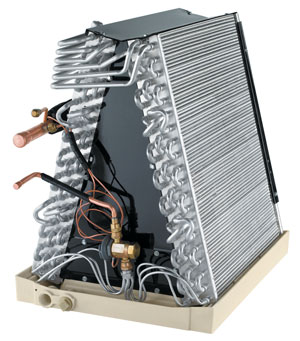 Copper coils or aluminium?Coils in ACs are of two kinds. They are used for absorbing hot air from a room as well as sending out the hot air in to the atmosphere. The refrigerant moves over these coils. The efficiency of ACs depend on the metal that is used for its coils. However, as copper is highly priced, the ACs using copper coils are also priced high. The prices of ACs with aluminium coils is less.
Copper coils or aluminium?Coils in ACs are of two kinds. They are used for absorbing hot air from a room as well as sending out the hot air in to the atmosphere. The refrigerant moves over these coils. The efficiency of ACs depend on the metal that is used for its coils. However, as copper is highly priced, the ACs using copper coils are also priced high. The prices of ACs with aluminium coils is less.
However, copper coils work more efficiently in absorbing hot air and releasing it outside. ACs with copper coils work more efficiently. Copper coils are strong and even if they are damaged, can easily be repaired. But aluminium coils need to be replaced, even when slightly damaged.
Normally, coil in the AC are outside. They have to be cleaned often, as they gather dust and grime. For this, copper coils are better as they can be easily cleaned. As for aluminium ones, they need a shield to be protected from the outside environment.Copper coils are resistant to rust, where as aluminium coils, especially at the points of entry and outlets from the compressor and evaporator, are prone to rust.
However, some companies are using light weight copper coils to save on costs. They are also using refrigerants that need high pressure. This combination damages copper coils easily. In this case, it is better to have aluminium coils.
Why rooms get heated?
Normally, when temperatures are high outside, the heat enters the room through the door and windows. Even we release a lot of heat throughout the day. All electronic gadgets and equipment like fans, refrigerators and TVs release a lot of heat, as long as they are running. With this, the AC is burdened.
That is why, care should be taken to see that there are no electronic gadgets or equipment in the room with AC. Also ensure that all doors and windows are closed when AC is on. This way, the room is cooled without much burden on the AC and saving on power bills.
One AC for two rooms
One AC can be used to cool two rooms. For this a higher capacity AC should be chosen and it should be placed between both the rooms. It is better to keep the doors and windows open so that there is free movement of air between both the rooms, for maximum cooling. Otherwise, one room will be cooler than the other.
Benefits of Inverter ACs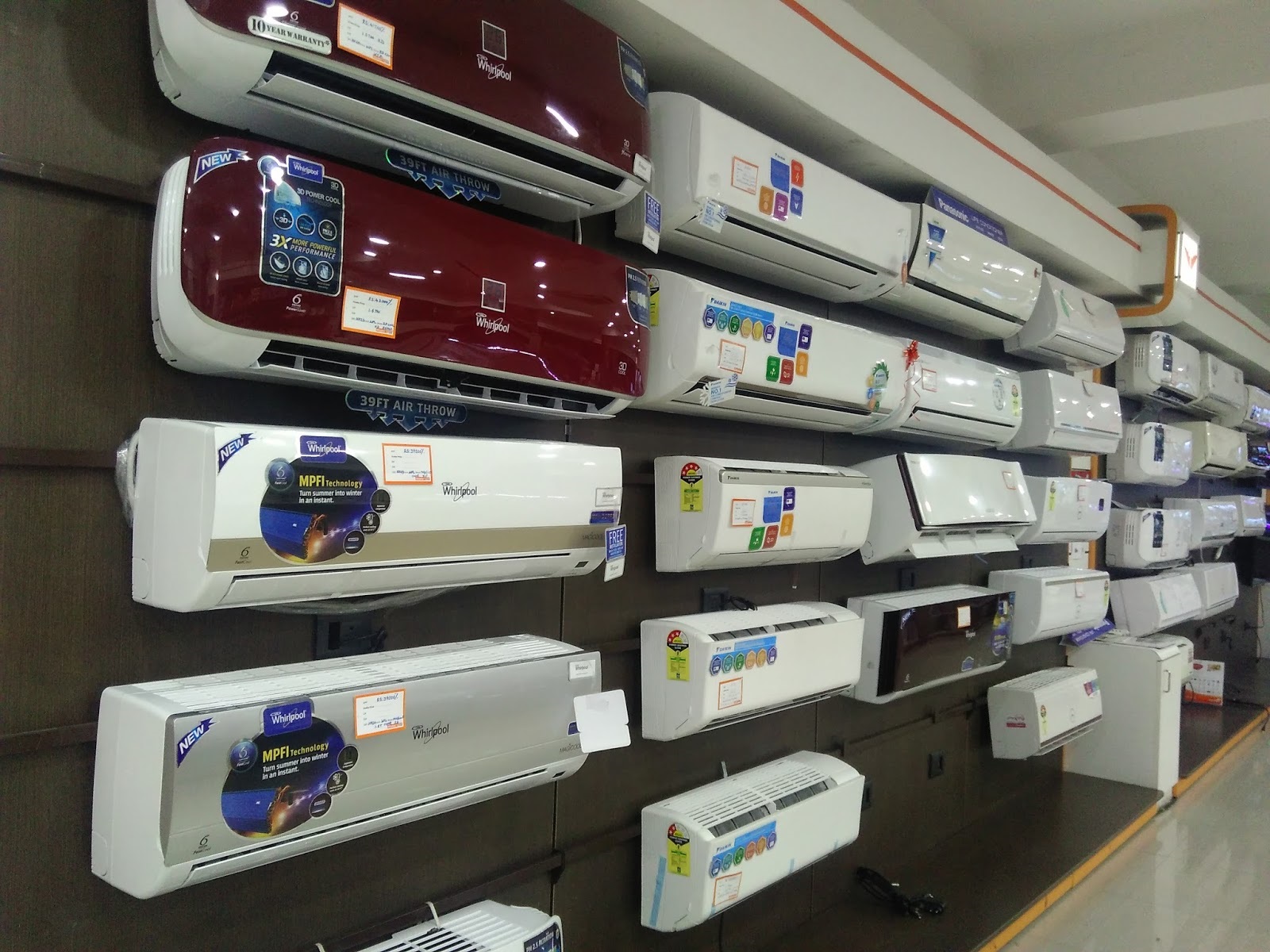 Normally, inverters are equipment that save power and are useful when there is a power cut. But inverter technology in ACs and refrigerators is not that. These help to change the speed of the motor according to the need and circumstances. There are lots of benefits with inverter ACs.
Normally, inverters are equipment that save power and are useful when there is a power cut. But inverter technology in ACs and refrigerators is not that. These help to change the speed of the motor according to the need and circumstances. There are lots of benefits with inverter ACs.
An ordinary AC compressor stops when the required temperature is reached. It starts again, as the temperature levels rise up in the room. As such, temperature levels in the room keeps changing from high to low. But in inverter AC, the temperature levels are almost even at all times as the inverter controls compressor speed according to the temperature level in the room.
Power consumption is high in ordinary ACs, as they consume power as long as they are working. But inverter ACs keep working according to the need of the room, consuming only that much power that is necessary, thereby saving on power.
Rarely ACs function with ordinary inverters. In this case, an inverter AC is advantageous.
However, prices of inverter ACs are more than ordinary ACs.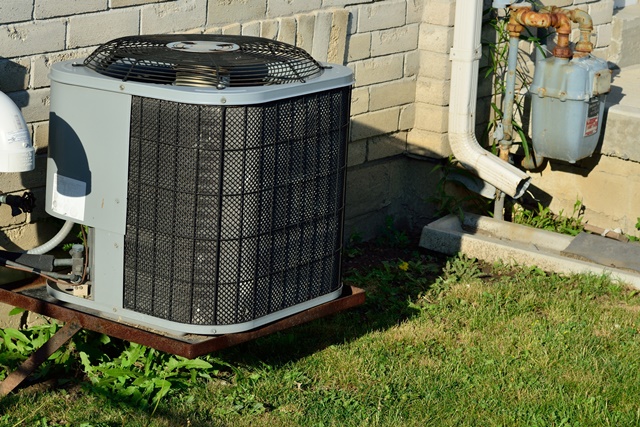 Heater cum ACNormally ACs are used for cooling. But there are dual ACs that function as both coolers as well as heaters. The cooling process is reversed in heater, where the hot air from outside is blown inside the room, through the same technology. Which means that in winters we can stay warm with the same AC that cooled us during summer. However, these stop functioning in extreme cold conditions, where the temperatures drop below four degrees C. Normal room heaters are made of metal that gets heated up and warms up a room. But these require a lot of power. Dual ACs consume less power than heaters. That is why they are preferred in places where the climate is cold.
Heater cum ACNormally ACs are used for cooling. But there are dual ACs that function as both coolers as well as heaters. The cooling process is reversed in heater, where the hot air from outside is blown inside the room, through the same technology. Which means that in winters we can stay warm with the same AC that cooled us during summer. However, these stop functioning in extreme cold conditions, where the temperatures drop below four degrees C. Normal room heaters are made of metal that gets heated up and warms up a room. But these require a lot of power. Dual ACs consume less power than heaters. That is why they are preferred in places where the climate is cold.
Guidelines before buying
Estimate the size of the AC that is needed based on the area of the room or hall. If the AC is either more or less than the capacity that is needed, either you will not have value for money or there will be waste of money and power bills. It is always better to take an AC that has higher rating for power efficiency. If you are not going to use it frequently, than you can take one with less rating, as the prices are higher for highly rated ACs. In any case, it is better to take a unit that is rated three stars or more.
Inverter ACs will save 30 per cent to 60 per cent on power.
Several ACs have an auto clean mode. So it is not necessary to clean the unit from time to time.
Ensure that the coils have corrosive protection, so that they do not gather rust. Bluefin or Micro channel condensers are good. Some companies have water cooled condensers. These work more efficiently, especially in extreme heat conditions. However, for these water has to be used.
Care for ACs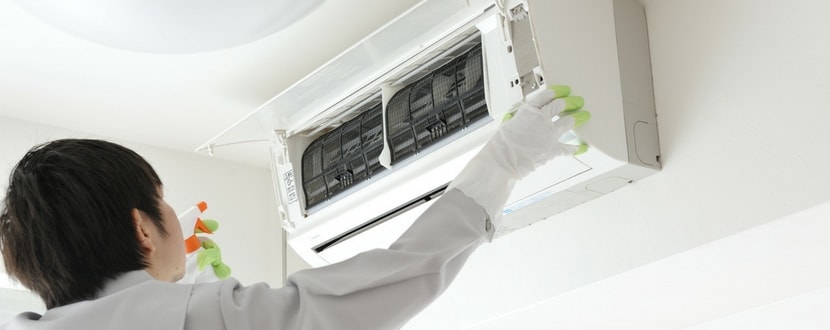 Rooms are open for breeze and sunlight to enter inside. With this, ACs are burdened. That is why rooms with ACs should be arranged in such way that breeze etc., do not enter. Ensure that sunlight does not fall directly on the outside unit of the AC. This will affect the efficiency of the AC and it will consume more power. The coils in the unit get damaged, especially in places that are close to the sea and have high humidity. These have to be cleaned frequently.
Rooms are open for breeze and sunlight to enter inside. With this, ACs are burdened. That is why rooms with ACs should be arranged in such way that breeze etc., do not enter. Ensure that sunlight does not fall directly on the outside unit of the AC. This will affect the efficiency of the AC and it will consume more power. The coils in the unit get damaged, especially in places that are close to the sea and have high humidity. These have to be cleaned frequently.
Using a fan in a room with AC on is useful, as it spreads the coolness spreads all over the room. Normally, that part of the room where the AC unit is situated is much cooler than other parts. With a fan on, the coolness spreads as well as there is less burden on the AC, leading to less power consumption.
The PCB in an AC is a very sensitive part and care should be taken that it is not damaged.
As the filters get clogged, the cooling effect decreases. So ACs have to be serviced at least once in six months. Sometimes the outdoor unit does not start easily due to defect in capacitor or compressor. They should be checked and changed if necessary. The blower (fan) in the indoor unit sometimes is damaged and it fails to function. Sometimes the AC stops functioning if the level of the refrigerant has gone down. This can be checked and refilled. For long-term, efficient functioning of an AC, it has to be serviced at least once in six months.



















